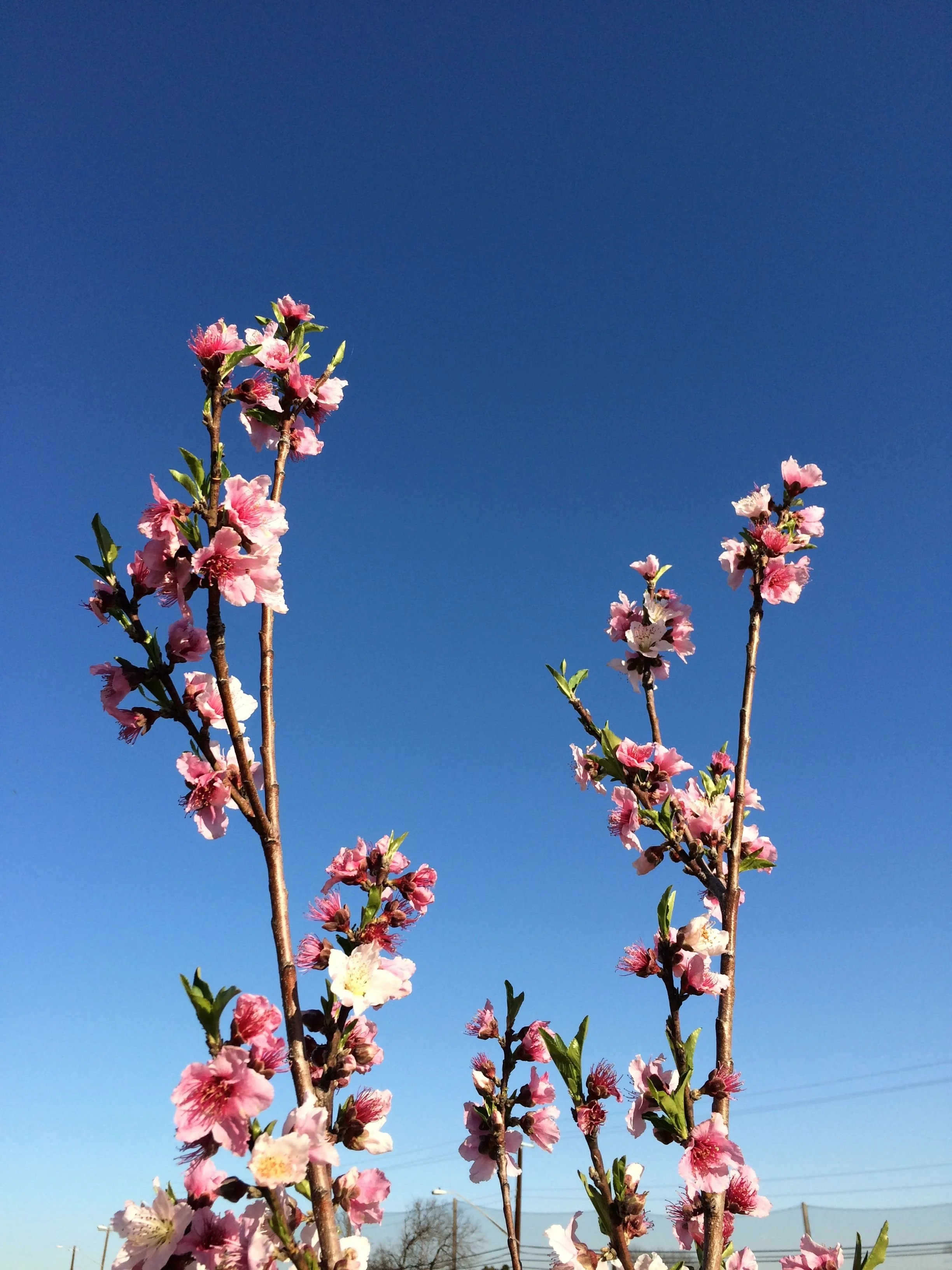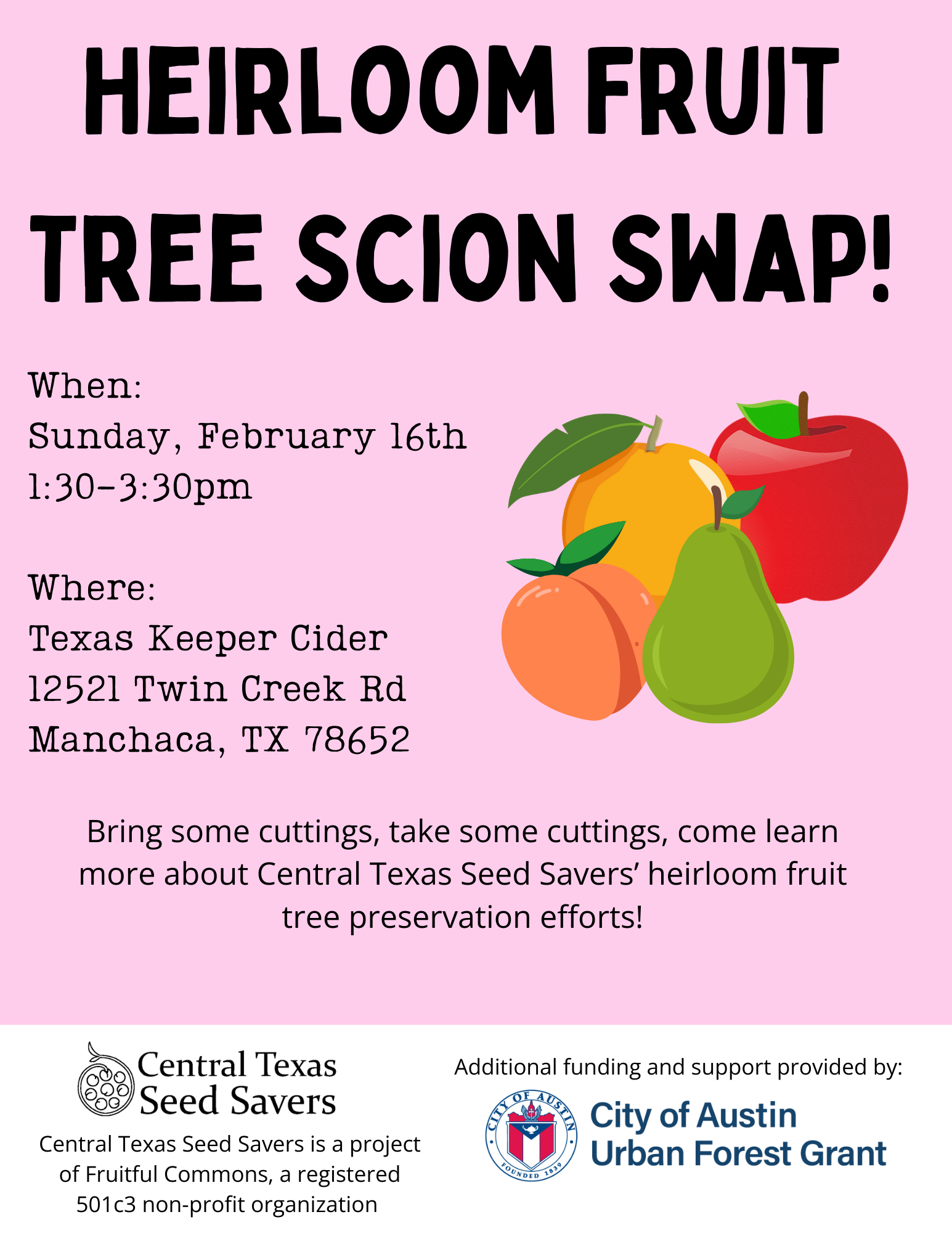Heirloom Fruit Tree Preservation
Growing fruit in Texas is not for the faint of heart. Between our heat, the cold snaps, drought, pests, and diseases, it can be very difficult to keep fruit trees healthy, happy, and producing delicious fruit. At the same time, it’s not unusual to stumble across a tree that is thriving and producing fruit against the odds–perhaps an ancient pear tree growing on the site of an old homestead, a wild peach tree sprouted from a discarded pit, or a locally-adapted fig tree that’s been passed down across multiple generations through cuttings. We believe it’s important to preserve the genetics of these hardy varieties, for the sake of biodiversity and building more resilient local food systems in the face of climate change.
Supported by an Urban Forest Grant through the City of Austin, the Central Texas Heirloom Fruit Tree Preservation Project seeks to identify, propagate, and share these special trees with the public. Community engagement is a crucial part of the project’s mission, and we hold regular classes, grafting workshops, scion swaps, and other meetups to raise awareness and empower the public to participate in our preservation efforts.
Are you interested in getting involved? Do you know of a fruit tree that is thriving without much human intervention? Please reach out to us at centraltexasfruitproject@gmail.com.
If you use INaturalist, please add your observations of fruit trees to our Heirloom Fruit Tree Preservation Project.
Tips for Collecting Scionwood
Join us for our 2025 Scion Swap
Why we graft:
Many of the fruits we enjoy the most do not grow back true from seed. In other words, you might plant a seed from a delicious apple or pear, but the resulting plant will be a genetic roll of the dice and may not have any of the characteristics of original fruit. There’s a very good chance it will be inedible! If you want to propagate that fruit variety, with all of its desirable qualities, you must take a cutting (also known as a scion) of that original tree, and splice it onto a compatible rootstock– a process known as grafting. From the graft union up, the new tree that grows will be a genetic clone of the original fruit tree, and will produce that same delicious fruit.


